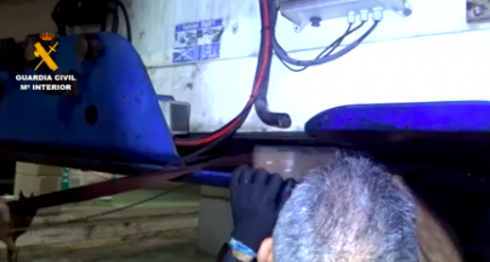A COLLECTION of Spain’s dignitaries, royals and military leaders will descend on the port of Cartagena this Thursday to witness the launch of Spain’s very first S-80 class military submarine.
King Felipe, with his daughters Leonor and Sofia and heads of Spain’s military will witness the first underwater tests of the S-80 class submarine Isaac Peral as it makes its final steps to joining the rest of Europe’s underwater arsenal.
The vessel, an 80 metre monster designed and built in Cartagena’s Navantia shipyard, will join Spain’s first and only operational submarine by 2023 if testing goes to plan.
Spain’s journey to creating the S-80 began over a decade ago, looking for a modern replacement for their aging 50 year old S-70 submarine.
However issues with the initial design halted progress whilst manufacturers sought solutions to weighting issues.
Navantia approached the US Navy and General Dynamics for help, leading to a complete redesign and a subsequent approval by Spain’s ministry of defense led to the project restarting in 2016.
Development budget was set at €3.9 million and Navantia enlisted the help of over 100 companies across 11 autonomous communities to contribute to the construction, with Murcia alone accounting for over 2,000 jobs.
The Spanish government hopes that its homegrown entrance into the highest spec, non-nuclear submarine industry will pave the way to export the vessel to countries across the globe, much like their F-100 Frigates.
The F-100 has so far been sold to the Norwegian and Australian Navy for an estimated €2 billion, with domestic contracts totaling over €2.4 billion.
Navantia hopes that the S-80 project will help generate a total of €250 million for the Spanish economy.
Plans are underway to create four S-80 class submarines, the Isaac Peral, the Narciso Monturiol, the Cosme García and the Mateo García de los Reyes.
Each will be operated by just 32 crew members and will be designed to be fully self sufficient for 15 days under water thanks to its in-built ‘brain’ network of sensors and its hydrogen and oxygen fuel system.
It will also have the capability to be armed with sea to ground missiles, creating another aspect to Spain’s military arsenal and joining countries such as the UK, US, Russia, Japan and China in their ability to design and build their own submarines.
READ ALSO:
- Morocco buys first Spanish battleship in 40 years to help combat Spain’s migrant crisis
- Royal Navy contract worth €1 billion ‘could go to Spain’ as bargaining chip over Gibraltar
- Spain could snatch €1 billion Royal Navy ship contract ahead of British firms despite wargames over Gibraltar








